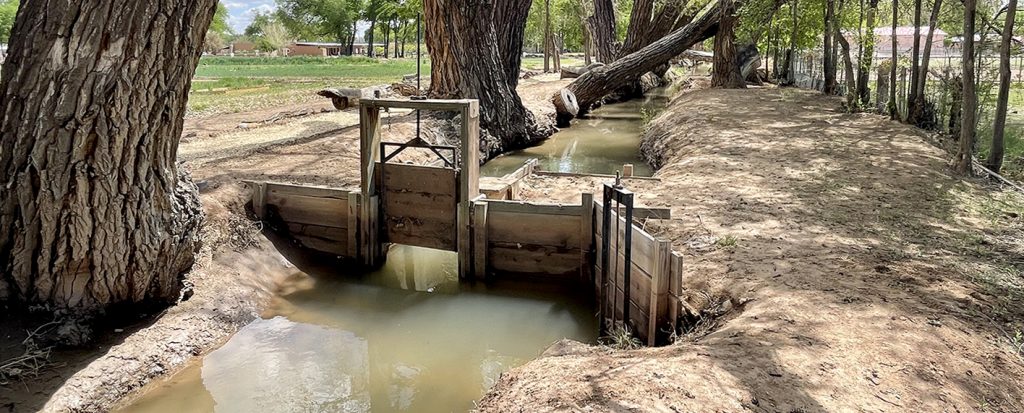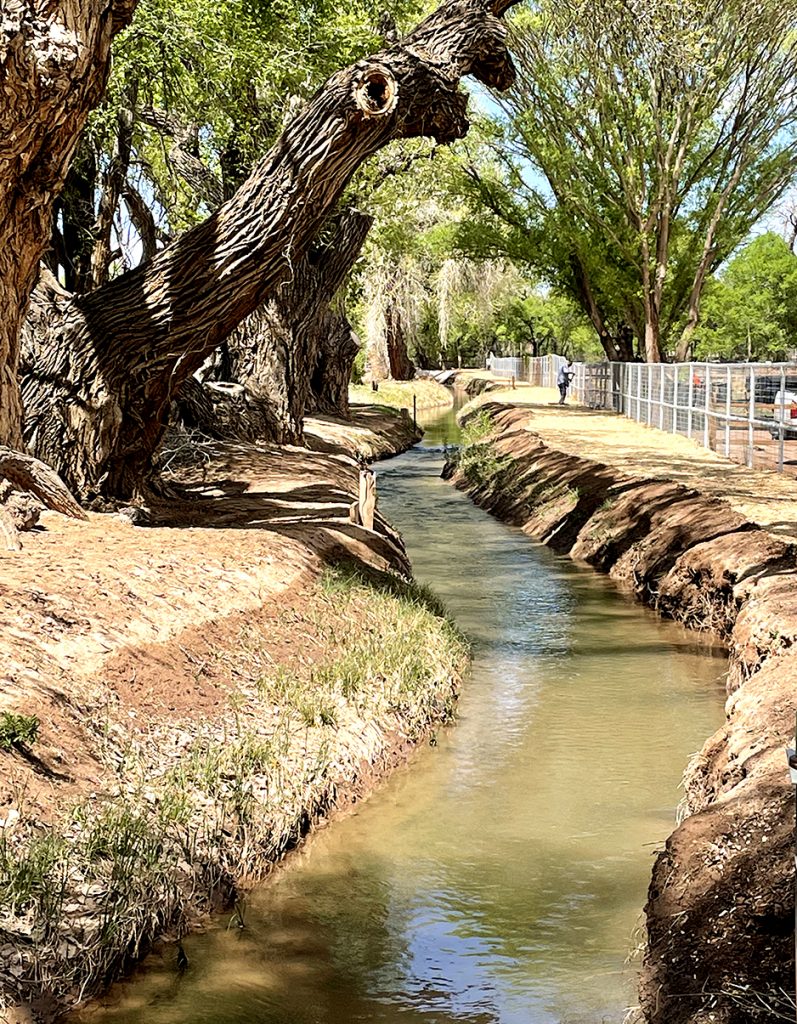
Indigenous people of the Southwest have long irrigated their fields by digging earthen canals and by using flood irrigation. These practices go back well over a thousand years. The governance structure is part of pueblo spirituality. Since water is feminine, women play an important role in issues involving water. State laws do not apply to pueblo water distribution practices.
Acequias also have a very long history. The word comes from the Arabic and traces back 8,000 years to the Middle East. Moors from northern Africa brought the practice into Spain where not only were acequia leaders elected but there was also a court system. When Onate led European settlers into this mid-Rio Grande region, they forced indigenous people to dig acequias for their villages, knowing how critical water was to both human and plant life. There are now 640 acequias across New Mexico.
Acequias are a community form of irrigation led by an elected mayordomo. Users of the ditch have an agreed upon code as to when and where work will be done to keep the ditch clean and functioning. Some consider acequias to be the first form of democracy in the U.S. because of their one person/one vote form of governance. New Mexican acequia laws have evolved to provide easements across public and private property so the ditch users always have access for maintenance. The legal descriptions protect New Mexican water traditions. But acequias are about more than water…
Acequias promote community values such as sharing, trust, and respect. José Rivera writes about this in Acequia Culture: Water, Land and Community in the Southwest. San Isidro Day (see Upcoming Events) embraces both religious and cultural ceremonies.

Acequias are also designed for sustainable agriculture because they prolong river and stream runoff, save water because of reduced transpiration, and provide hydrologic functions such as stream channelization and flood control. In a study of traditional acequias in northern New Mexico, 60% of the water running through acequias as surface water went back into the river, while another 33% went into ground water. In a more recent 10 year study of three acequia systems in northern New Mexico, researchers from New Mexico State University and Sandia Labs studied the ecology, rangeland management, hydrology, anthropology, and agricultural economics of acequias. Their report is available from New Mexico State University
Often, acequias in the same area will come together to form Acequia Associations. The South Valley Regional Association of Acequias is a fusion of people who own water rights falling under acequia laws and the Mid Rio Grande Conservation District (MRGCD), who are responsible for delivering the agreed upon amount of water. In this Association, all rights are treated equally as if they came into existence at the same time. Originally, each of the five major acequias in this area (Atrisco, Arenal, Armijo, Pajarito, and Las Padillas) had their own head gates from the river, but now they are linked by one diversion dam near Alameda where the water is accessed and channeled to all five ditches. Isleta Pueblo has its own diversion.
Urban sprawl and desertification have increased demands for water in our region, while pueblo and acequia farmers have not changed their water usage over the centuries. Their surface water is now being targeted to solve the problem of increased usage by the industries and municipalities along the mid Rio Grande. How and when will the Albuquerque Bernalillo County Water Utility address these increased municipal demands and force water conservation? New policies must be enacted by both the county and city. At the same time, it is known that 70-90% of fresh water resources in New Mexico are used for irrigated agriculture. What decisions need to be made by conservation districts statewide?

